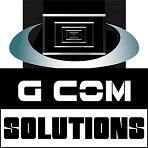- You are here:
- Home »
- Power Query Training for Data Dashboards
Power Query Training for Data Dashboards
Power Query is a powerful tool for data analysis and management. It is a feature in Microsoft Excel and Power BI that enables users to extract, transform, and load data from various sources into a data model. With Power Query, it is possible to clean and transform data, create calculated columns and tables, merge and append data, and much more. In this article, we will provide an in-depth guide on Power Query Training for Data Dashboards.
Why Use Power Query for Data Dashboards?
Data dashboards are a great way to visualize data and gain insights into business performance. However, creating and maintaining a data dashboard can be a daunting task, especially when dealing with large volumes of data from different sources. Power Query simplifies the process by enabling users to extract, clean, and transform data from various sources, such as CSV files, databases, and web pages, into a format that is suitable for analysis and visualization.
Getting Started with Power Query
To get started with Power Query, open Microsoft Excel or Power BI, and select the Power Query tab. From there, you can choose to create a new query or edit an existing one. Once you have a query open, you can begin to add data from various sources by clicking on the “From Other Sources” button. This will open a dialog box where you can select the data source you want to use.
After selecting your data source, you can use the Power Query Editor to clean and transform your data. The editor provides a range of tools and functions for manipulating data, such as splitting columns, removing duplicates, filtering rows, and much more. You can also create custom formulas using the M language, which is the programming language used by Power Query.
Advanced Power Query Techniques for Data Dashboards
While basic Power Query techniques are useful for cleaning and transforming data, there are also advanced techniques that can be used to create more sophisticated data models and dashboards. These techniques include:
Combining Data from Multiple Sources
One of the most powerful features of Power Query is its ability to combine data from multiple sources. This is done using the “Merge Queries” function, which allows users to combine two or more queries based on a common field. This technique is useful for creating more complex data models that involve multiple tables.
Creating Hierarchies
Another advanced technique is the creation of hierarchies. This is done by creating a custom column that combines multiple columns into a hierarchical structure. Hierarchies can be used to create drill-down reports, where users can navigate through different levels of data.
Using Parameters
Power Query also allows users to create parameters, which are values that can be used to filter data. This technique is useful for creating dynamic dashboards that can be filtered based on user input. Parameters can be created using the “Manage Parameters” function.
Creating Custom Functions
Finally, users can create custom functions using the M language. Custom functions can be used to automate repetitive tasks or create more complex data models. To create a custom function, users can use the “New Function” button in the Power Query Editor.
Conclusion
Power Query is a powerful tool for data analysis and management. It provides users with a range of tools and functions for extracting, cleaning, and transforming data from various sources. By mastering Power Query, users can create more sophisticated data models and dashboards that provide valuable insights into business performance.


